EdSource asked education leaders, advocates and keen observers of all segments of California’s education system to comment on Gov. Gavin Newsom’s 2021-22 revised budget for early education and child care.
Scroll down and click on the photos to read their thought-provoking responses on the governor’s plans for investing in early education. Also see what education leaders are saying about the governor’s K-12 and postsecondary education budget.
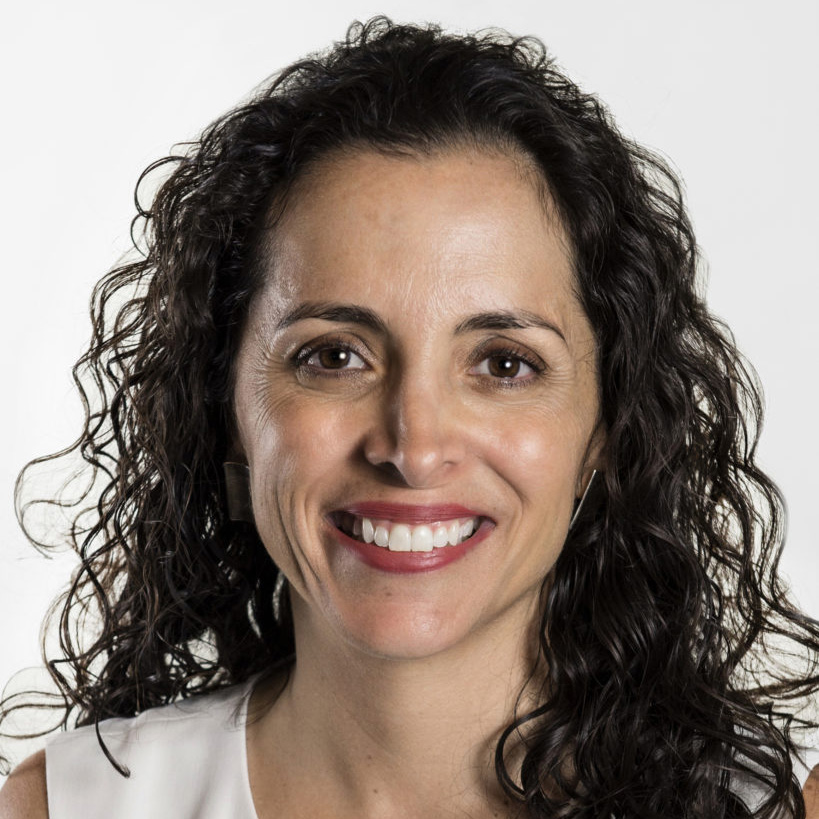
Patricia Lozano
Early Edge California
What among the governor’s proposals will most advance students’ recovery from the pandemic and why?
Little kids were greatly affected during the pandemic. Distance learning was hard for them, and they lost many opportunities to develop and learn. Gov. Newsom’s vision to expand transitional kindergarten and child care slots will provide an opportunity for future generations to recover from the pandemic and for parents, especially mothers, to go back to work. Additionally, there will be wraparound services and mental health supports that will help schools to meet the holistic needs of students, families and communities and go a long way toward helping advance pandemic recovery.
What priority should have been in the budget but wasn’t?
The early learning and child care workforce has been essential in allowing California’s economy to grow during the pandemic while enduring profound challenges to both their financial stability and providers’ own health and safety. The May Revise included one-time stimulus funding to support the recovery of the workforce in multiple ways including stipends, waiving family fees, extending hold-harmless and mental health supports. We should keep supporting the workforce, increase reimbursement rates and continue to strengthen access to early learning and care programs for infants and toddlers.
Patricia Lozano is executive director of Early Edge California, an advocacy organization focused on advancing policy changes and investments that will expand high-quality early larning programs for all children from birth to age 8.

Melissa Stafford Jones
First 5 Association of California
What among the governor’s proposals will most advance students’ recovery from the pandemic and why?
In terms of early care and education, we are pleased to see initial down payments to support the child care field in the form of stipends for providers, the waiving of family fees, the continuance of hold harmless payment policies, and funding for child care facilities – although we do think more funding is needed, and such policies must be extended beyond 2023. In a broader sense and especially after the tough year we’ve had, we’re pleased to see efforts to support young children and family’s social-emotional wellness –which we know is tied to learning success – through the creation of a Medi-Cal dyadic (parent-child) care benefit and $10.6 million in one-time funding for early childhood mental health consultation.
What priority should have been in the budget but wasn’t?
The final budget must address the foundational issue of increasing child care provider reimbursement rates and fixing our state’s broken reimbursement rate structure. Also, the proposed 100,000 new child care slots is not enough to build back from the loss of 57,000 permanent slots during the pandemic, on top of the state’s pre-pandemic waitlists that barred too many parents from receiving child care, especially infant-toddler care. We have a unique opportunity with this year’s budget surplus to build back child care systems in a way that addresses inequities that have persisted for far too long.
Melissa Stafford Jones is the executive director of First 5 Association of California, a statewide organization focused on children age 5 and under.

Max Arias
Child Care Providers United (CCPU)
What among the governor’s proposals will most advance students’ recovery from the pandemic and why?
Members of Child Care Providers United negotiated agreements with the state to help stabilize the child care industry during the Covid-19 crisis. The governor’s May Revise proposals reflect these COVID-relief agreements with the inclusion of greater financial support for providers to ensure they can keep their doors open and the elimination of family fees to keep kids in care. Providers have faced tremendous financial losses from fluctuating enrollment and shouldered steep costs for supporting online learning. The May Revise also reflects our shared vision to fund increased child care capacity statewide, but we will need more than one-time money to recover and rebuild the child care infrastructure. When more children of all ages have access to quality child care and early learning, achievement gaps are reduced long term and students are able to find long term educational success.
What priority should have been in the budget but wasn’t?
The governor’s early learning proposals simply did not go far enough to support an early learning system that was in crisis far before the COVID-19 pandemic. This is why providers will continue to negotiate with the state for long-term changes. California’s 40,000 child care providers have not seen an increase in payment from the state in years, but their costs have more than tripled during the pandemic. Nearly 6,000 providers, primarily women of color, have closed their doors in the last year, and many cannot reopen without increased economic support from the state. Additionally, new child care providers have little incentive to open their doors, with the state’s current rates leading them to make less than minimum wage after expenses.
Max Arias is the chairperson of Child Care Providers United which brings together 40,000 family child care providers across California and is a partnership of SEIU Local 99, SEIU Local 521, and UDW/AFSCME Local 3930.

Keisha Nzewi
California Child Care Resource & Referral Network
What among the governor’s proposals will most advance students’ recovery from the pandemic and why?
Parents and child care providers have struggled financially for more than a year. Providers who have managed to remain open have gone into debt to survive. Parents have had to make hard choices between paying utilities or rent or child care. The governor’s proposals to provide stipends to providers and another round of Golden State stimulus checks will offer much-needed relief to families, thus benefiting the children they all love and care for.
What priority should have been in the budget but wasn’t?
The governor missed a huge opportunity to provide relief to the primarily BIPOC women child care providers, who have risked their lives throughout the pandemic, by increasing pay to a level that allows them to actually take care of their own families. With billions of federal dollars flowing into the state, and our own state surplus in the billions, and nearly 2 million children who qualify for child care subsidy waiting for the help to pay for the care they need, he could have at least doubled the number of subsidized child care spaces in his proposal.
Keisha Nzewi is public policy director for California Child Care Resource & Referral Network, a statewide child care advocacy organization.

Mary Ignatius
Parent Voices CA
What among the governor’s proposals will most advance students’ recovery from the pandemic and why?
After a year in the pandemic where parks and playgrounds were closed and young children were in isolation from their peers, the May Revise brings some relief to families. Ensuring these kids have access to the 100,000 child care slots in the proposal will get kids back into learning environments filled with joy, love and play. Waiving family fees will bring immediate economic relief and give parents the financial freedom to make quality choices for their children. The Golden State Stimulus will help families who have been left out of federal relief and honor their sacrifice over the year.
What priority should have been in the budget but wasn’t?
To reverse the harm of the pandemic and the decades of severe underfunding that preceded it, we can’t go back to incremental changes or the way things were. We must meet the need of the moment and bring healing to BIPOC families and the early childhood education workforce who have been harmed the most. We must honor the perseverance, grit, and sacrifice of our early educators who stayed open during the pandemic. Increasing reimbursement rates to all child care programs should be a priority of every CA decision maker. We are also seeking at least 200,000 no-cost child care slots. With $76 billion in state surpluses and $4 billion in federal child care relief, we don’t have to pick and choose which age gets care. We can fund the entire system to meet the needs of families, seamlessly from birth to age 13.
Mary Ignatius is the statewide organizer of Parent Voices CA, a grassroots organization that centers the wisdom and expertise of parents to drive system’s change.

John Kim
Advancement Project California
What among the governor’s proposals will most advance students’ recovery from the pandemic and why?
The governor’s proposed budget includes historic investments in public education. Investments in expansion of community schools, the expansion of transitional kindergarten for all 4-year-olds, resources for our undocumented youth, and facilities investments focused on increasing child care access to communities with the least resources. This all reflects a racially just, transformative change that will provide holistic supports for students, starting with our youngest learners. We thank Gov. Newsom, Superintendent of Public Instruction Tony Thurmond and State Board of Education President Linda Darling Hammond for their leadership on these issues.
What priority should have been in the budget but wasn’t?
The pandemic has devastated the early child care field. Moving forward, we look to prioritize even greater investments for our youngest learners with a focus on comprehensive services for the whole child, their family and the child care providers, largely women of color, who serve them. And, last week, the Los Angeles Unified School District invested an additional $700 million into the Student Equity Need Index (SENI) innovative equity formula that has proven to be a model to address high-needs schools and offer services and programs needed to get on the pathway toward equal opportunity. SENI is an equity funding tool that we believe can be replicated across the state. Now is the time for bold investments. We look forward to working with state leaders to re-imagine and rebuild an education system where children, families and providers are thriving and that leads with equity in K-12 funding to provide critical support for students with the greatest need.
John Kim is the executive director of Advancement Project California, a multiracial, multigenerational racial justice organization with expertise in research, advocacy and policy.

Mayra E. Alvarez
The Children's Partnership
What among the governor’s proposals will most advance students’ recovery from the pandemic and why?
As child health advocates, we strongly support the governor’s efforts in supporting maternal health and well-being by providing uninterrupted health care coverage to postpartum people for a full year, addressing high rates of preventable maternal mortality that disproportionately impact Black and Indigenous communities. We hope they will build on this proposal to ensure more young children have the security of uninterrupted coverage, as we include below.
What priority should have been in the budget but wasn’t?
Expanding early childhood mental health and trauma-informed care investments is critical. We believe, in addition to the governor’s proposed investments made in expanding professional development for the early childhood workforce through the California Inclusion and Behavior Consultation Network and increased investments in dyadic care and family therapy benefits, there must be more specific investments made in supporting social and emotional development and trauma resilience for young children before they display concerning behaviors or adverse childhood experiences (including the pandemic) that can accumulate and, if unaddressed, coalesce into long-term toxic stress.
An effective response to the pandemic must involve a whole-child, whole-family wellness approach that includes a focus on early childhood preventive mental health services to ameliorate the potential for mental health diagnoses or crises later in life and systematic attention to the preparation and professional development of our early childhood workforce to respond, including home visitors and other family service providers. Overwhelming evidence shows strategies that build up protective factors for young children, like relationships with caring adults and supporting positive social and emotional development in the first five years of life, must be included explicitly in the state’s pandemic response.
Interventions, such as early childhood mental health consultations, home visiting and other community-centered interventions, build the capacity of parents and caretakers to respond to a child’s dynamic emotional state and strengthen the bond between them, showing unique promise at addressing not only the child’s social and emotional needs but also those of the adults in their lives. Systemic interventions, such as broad access to trauma-informed care training for those who care for and work with families of young children and broad public education on the impacts of trauma and adverse childhood experiences on young children are important complements to the work being led by the Surgeon General’s ACES Aware effort.
We applaud the expansion to 12 months postpartum that is included but believe we must also ensure continuous Medi-Cal coverage during the important first years of early childhood development (from birth up to age 5). Removing obstacles for families and minimizing barriers to coverage will strengthen access to critical preventive services and screenings for families with young children that are necessary to ensure children grow up healthy and ready to learn. During a time when children have lost so much and care has significantly dropped, we need ways to keep families connected to the services they need.
As we look to a new normal, we would like to see a firm commitment from the state to our most marginalized children, ages birth through 8. This includes finding ways to support their healthy development through the expansion of Whole Child-Whole Family Wellness Hubs. Wellness hubs are an evidence-based model of place-based, where possible, community-driven centers that provide integrated and coordinated services across health, mental health, youth services, child welfare, early learning and care including dual language immersion programs, home visiting and education for both children and families. The hubs incorporate a two-generation approach that acknowledges that supporting the healthy development of young children also requires supporting their caregiver’s ability to provide adequate care. Whole Family Wellness Hubs provide wraparound services around health, mental health and social determinants of health to children and families through structured partnerships between community entities and service providers that are tailored to the unique contours of each community, as determined by a community assessment.
Mayra E. Alvarez is president of The Children’s Partnership, a nonprofit children’s advocacy organization committed to giving every child, no matter their background, the resources and opportunities they need for a bright future.

Patricia Gándara
UCLA Civil Rights Project
What among the governor’s proposals will most advance students’ recovery from the pandemic and why?
Young children need socialization, opportunities for interaction with peers and teachers and engaging activities that make school something to look forward to. Basic skills can be folded in.
What priority should have been in the budget but wasn’t?
More direct focus on recruiting, supporting and preparing bilingual educators (including pupil personnel). Forty percent of our kids start school with another primary language. This is a huge resource, but we turn it into a problem without sufficient numbers of well-qualified bilingual teachers to staff bilingual programs.
Patricia Gándara is Co-director of Civil Rights Project at UCLA, which focuses on racial equity research and policy

Ashley Williams
Center for the Study of Child Care Employment
What among the governor’s proposals will most advance students’ recovery from the pandemic and why?
The budget revise includes stipends for subsidized child care providers. Explicit strategies to get much-needed relief in the form of cash assistance to the workforce is critical for recovery and recognition of their historic underpayment and key contributions to California’s infrastructure during the pandemic. These stipends are one way to do that, but most programs in our state are not participating in the subsidy system. This raises concerns about early educators doing the same work but not having access to much-needed relief.
What priority should have been in the budget but wasn’t?
The early child care and education (ECE) workforce is mostly women of color who are paid low wages, experience high rates of poverty and face limited to no paid leave to protect their health and well-being. With the heightened awareness of systemic racism and California’s commitment to advancing equity, we hoped to see explicit strategies to disrupt the historic underpayment and undervaluing of the ECE workforce. Immediate and long-term solutions to address the needs of the workforce are paramount to actualize an equitable and comprehensive ECE system.
Ashley Williams is the senior policy analyst at the Center for the Study of Child Care Employment at UC Berkeley, an organization focused on conducting research and proposing policy solutions aimed at improving how our nation prepares, supports and rewards the early care and education workforce.

Martha Hernandez
Californians Together
What among the governor’s proposals will most advance students’ recovery from the pandemic and why?
The continued investments to expand early learning opportunities, including universal transitional kindergarten, are critical to preventing opportunity and achievement gaps early on and building proficiency in English and the home language for dual language learners. The initial $900 million 2022-23 investment, which would increase to $2.7 billion by 2024-25, would achieve that vision by phasing in access to transitional kindergarten for all 4-year-olds.
What priority should have been in the budget but wasn’t?
As 60% of incoming kindergartners come from households who speak a language other than English, it is our hope that all state-funded early childhood initiatives include an explicit focus on programs and approaches that support the assets and unique needs of dual language learners, including use of both English and the home language.
Martha Hernandez is the executive director of Californians Together, a coalition of advocacy organizations focused on promoting equitable educational policy and practice for English learners.
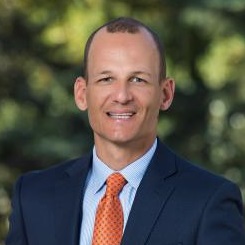
Assemblymember Kevin McCarty, D-District 7
Assembly District 7
What among the governor’s proposals will most advance students’ recovery from the pandemic and why?
As chair of the Assembly Budget Subcommittee on Education Finance and champion for early education, I find there are many victories in the governor’s plan, which include universal transitional kindergarten. UTK will transform our education system so that every child is ready to thrive upon entering kindergarten. We’ve introduced five bills since 2014 to make California a PreK4All state, and I am grateful for the governor’s leadership in getting us across the finish line.
What priority should have been in the budget but wasn’t?
Child care rate reform and slot expansion, and we look forward to working with the governor to add these.
Kevin McCarty, Assemblymember, District 7
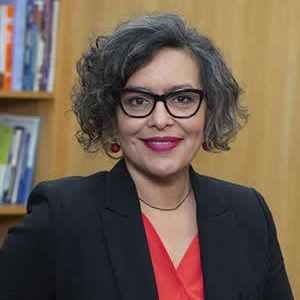
L. K. Monroe
President of the California County Superintendents Educational Services Association (CCSESA), Alameda County superintendent of schools
What among the governor’s proposals will most advance students’ recovery from the pandemic and why?
The governor’s budget increases for public education, coupled with one-time funding for school reopening in the current year, provide a unique opportunity for expanded wraparound services, including mental health and critical support to districts and schools as our students return to classrooms. We eagerly anticipate seeing these proposed increases codified in the Legislature’s approved budget, for this year and in future years, to move California school per-pupil funding in the right direction.
L.K. Monroe is the Alameda County superintendent of schools and president of the California County Superintendents Educational Services Association.
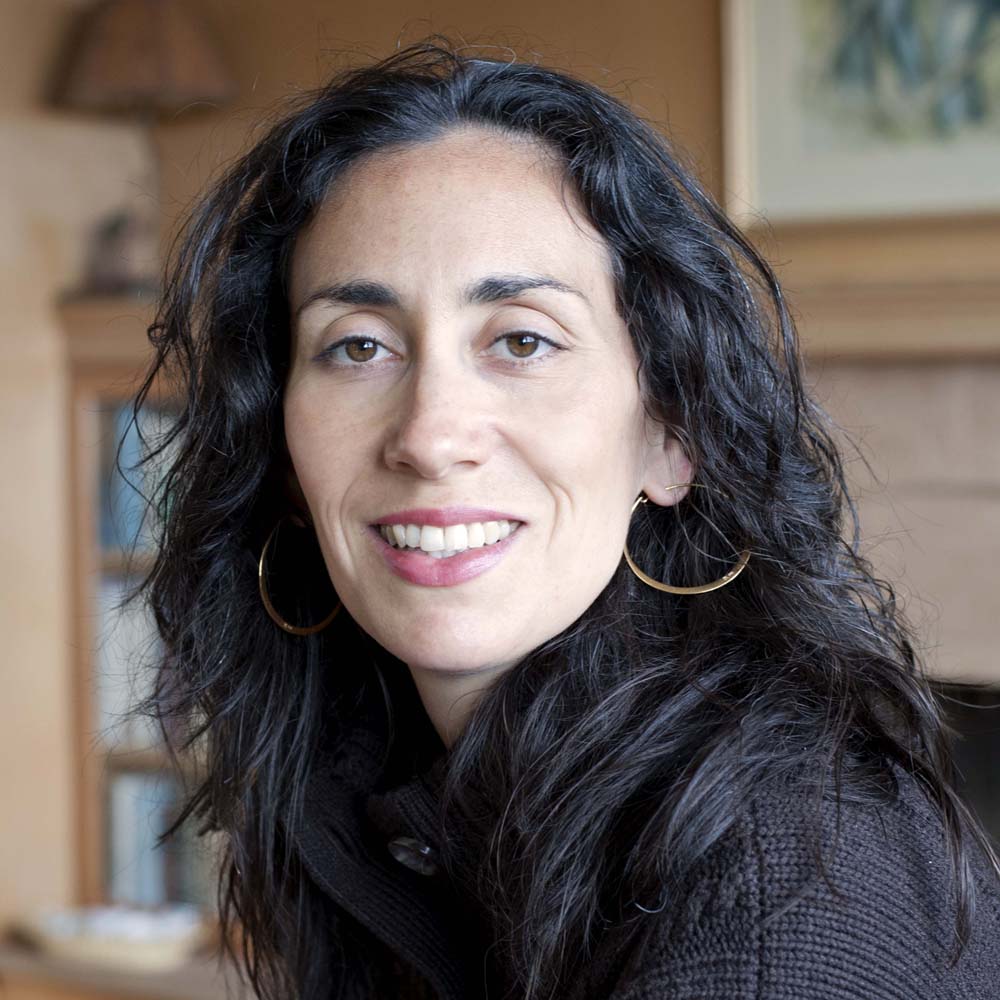
Anya Hurwitz
SEAL (Sobrato Early Academic Language)
What among the governor’s proposals will most advance students’ recovery from the pandemic and why?
This proposal represents a significant commitment to expanding early learning opportunities for all California children, particularly the investment in transitional kindergarten, which will be a critical component of recovery from the ongoing impacts of this pandemic. It is essential that these expansion efforts focus on quality early learning opportunities for the culturally and linguistically diverse children of this state whose families have sacrificed so much throughout the pandemic.
What priority should have been in the budget but wasn’t?
In California, educational equity must include deep thinking and attention to the specific assets and needs of our culturally and linguistically diverse children. This must be an explicit focus of all investments proposed in the budget.
Anya Hurwitz is the executive director of SEAL (Sobrato Early Academic Language), an educational nonprofit focused on early learning and elementary education whose mission is that all dual language learners and English learners in California learn, thrive and lead.
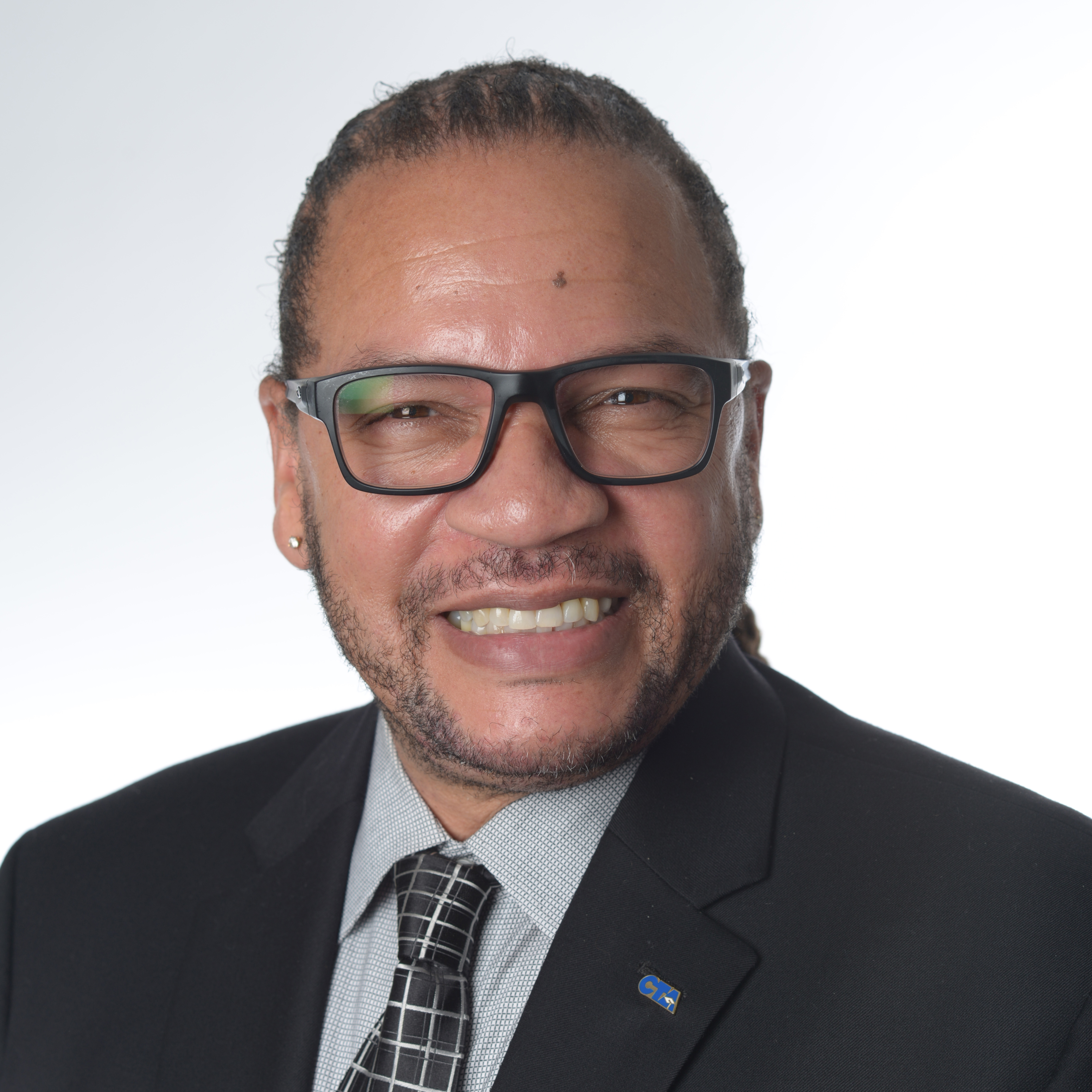
E. Toby Boyd
California Teachers Association (CTA)
What among the governor’s proposals will most advance students’ recovery from the pandemic and why?
We commend the governor for recognizing the importance of a long-term commitment to our youngest learners and to improving school readiness. Access to early childhood education and transitional kindergarten for all students is essential to giving students a strong start.
E. Toby Boyd is a kindergarten teacher and president of the California Teachers Association which represents more than 310,000 educators, and their students, throughout California.

Ted Lempert
Children Now
What among the governor’s proposals will most advance students’ recovery from the pandemic and why?
We appreciate the governor’s historic commitment to 4-year-olds, and that his transitional kindergarten proposal addresses a number of the concerns Children Now highlighted: there must be ongoing funding above the Proposition 98 guarantee to support TK expansion, that ratios/group sizes must be reduced and that families must have access to wraparound care. These provisions must be effectively codified with equity at the center of TK expansion. This means prioritizing under-resourced communities and students, preserving family choice, ensuring TK is developmentally appropriate for the younger children this expansion aims to serve and matched by a robust child care investment.
What priority should have been in the budget but wasn’t?
By far, the most disappointing part of the May Revision is its failure to prioritize child care. Although recent estimates indicate California has permanently lost 57,000 slots due to the pandemic (and 60% of residents lived in a child care “desert” previously), the Administration proposes only 100,000 additional slots and is silent on the long-overdue need for rate reform and paying providers a living wage. Further, it doesn’t sufficiently articulate how to spend $3.7 billion in federal funding, which is unacceptable given the crisis providers face today and the critical role child care plays in reopening the state economy
Ted Lempert is the president of Children Now, a whole-child research and advocacy organization that also coordinates the Children’s Movement of California.

John Gray
School Services of California
What among the governor’s proposals will most advance students’ recovery from the pandemic and why?
Achieving universal access to a high-quality prekindergarten program through transitional kindergarten is one of the most promising proposals in the May Revision to advance equity for all Californians. You cannot meaningfully eliminate equity and achievement gaps without first addressing the opportunity gaps. Kids should not be consigned to life success or failure because of their background. We have a moral obligation to make sure all kids have a chance to succeed.
What priority should have been in the budget but wasn’t?
The child care and preschool workforce is among the lowest compensated across all industries, and they have been calling for higher funding rates from the state that reflects not only a livable wage but also the growing cost of care. The absence of a meaningful rate increase for child care and preschool providers and the workforce in an otherwise bountiful May Revision is a demoralizing blow to an industry on the front lines of the health pandemic and economic recovery.
John Gray is president and CEO of School Services of California, a business, financial, management, and advocacy resource for educational agencies in California.

Eric Premack
Charter Schools Development Center
What among the governor’s proposals will most advance students’ recovery from the pandemic and why?
The May Revise seems to offer relatively little for recovery from the pandemic in early education, notwithstanding the huge long-term growth plan.
What priority should have been in the budget but wasn’t?
The governor should be leveraging increased funding as an incentive to reform the incoherent patchwork of pre-K and TK programs to create a pre-K system that provides a broad range of choices and is responsive to parents’ and students’ needs.
Eric Premack is the executive director of the Charter Schools Development Center, a leadership training and advocacy organization based in Sacramento.

Jan Gustafson-Corea
California Association for Bilingual Education
What among the governor’s proposals will most advance students’ recovery from the pandemic and why?
The governor’s proposal to move towards universal transitional kindergarten as a new grade by 2024 is incredibly exciting. It will provide access and equity to so many students and a strong start to students of diverse language and cultural backgrounds. Universal TK will be able to provide a steppingstone onto the biliteracy pathway ensuring more students become fully bilingual and biliterate in English and a partner language. Additionally, in the short term, as students return to in-person learning, we are encouraged that the governor emphasizes support for subsidized child care slots and increased support for a child care data system. The governor is showing that he is putting early learners and their parents and families first, and that will have a lasting impact on the education landscape in California.
What priority should have been in the budget but wasn’t?
We would have liked to have seen direct support for biliteracy learning programs for dual language learners. We need a clear focus and emphasis that children in TK or other early-childhood programs will be provided instruction and learning opportunities in a clear model that promotes bilteracy and multilingualism.
Jan Gustafson-Corea is the chief executive officer of the California Association for Bilingual Education (CABE), an educational nonprofit organization committed to the vision of biliteracy, multicultural competency and educational equity for all.
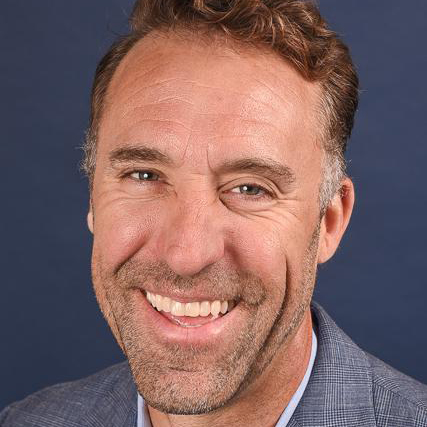
Jeff Freitas
California Federation of Teachers
What among the governor’s proposals will most advance students’ recovery from the pandemic and why?
We are really excited about the governor’s $2.7 billion proposal for universal transitional kindergarten, which at full implementation will add an additional 250,000 students by the 2024-2025 school year. Setting the adult-to-child ratio at 1-to-12 will also ensure greater individualized attention for every student, which is critical to support our youngest and most vulnerable students.
What priority should have been in the budget but wasn’t?
We need to make sure there is more support for the preschool side of early childhood education, especially professional development, as long-time educators shift from providing education to 4-year-olds to providing early education to 0-3 year olds. Planning for the universal transitional kindergarten should be done hand-in-hand with planning for preschool expansion.
Jeff Freitas is the president of the California Federation of Teachers, a union of educators and classified professionals.

Tony Wold
West Contra Costa Unified
What among the governor’s proposals will most advance students’ recovery from the pandemic and why?
We are excited about the increased concentration grant funding to create ongoing supports and encourage the funding for transitional kindergarten to expand to the significant infrastructure needed to build new classrooms for early education.
What priority should have been in the budget but wasn’t?
Ongoing LCFF growth with a new target to complete the gap funding.
Tony Wold is the associate superintendent, business services – chief business official, West Contra Costa Unified.

Susan Dumars
Catalyst Family
What priority should have been in the budget but wasn’t?
The most prominent unintended consequence of this proposed legislation is the potential creation of a divide between school districts and early learning professionals, both of whom depend on successful collaboration to deliver the best care and learning for the children, families and communities we serve. This proposed budget would realign preschool programming and move funding from private providers to school districts. This shift would leave non-local education agency providers with no or fewer funds, therefore reducing the scope of care available for families. After a disproportionately hard year on child care and early learning professionals — one that saw thousands of licensed centers in the U.S. close, many permanently, during the pandemic — this bill will inevitably result in further closures and workforce downsizing. We strongly suggest efforts refocus on meeting the comprehensive child care and early learning needs of all California families.
Susan Dumars is the president of Catalyst Family, a nonprofit 501(c)(3) organization that operates more than 160 child care centers throughout California, serving children through age 14, with over 50 years in operation.

Brian Rivas
Education Trust-West
What among the governor’s proposals will most advance students’ recovery from the pandemic and why?
The equity investments in early childhood education will offer our state’s youngest learners a strong start and relief to parents under pressure, especially those with the least access to child care. From universal transitional kindergarten, additional subsidized child care slots and investment for a child care data system, these steps will make a world of difference to our youngest Californians – and have a lasting positive impact on our state.
What priority should have been in the budget but wasn’t?
We would have liked to see an increase in reimbursement rates for child care providers, whose industry was decimated during the pandemic.
Brian Rivas is the senior director of policy and government relations of The Education Trust-West, a research and advocacy organization for education equity, from preschool through college.
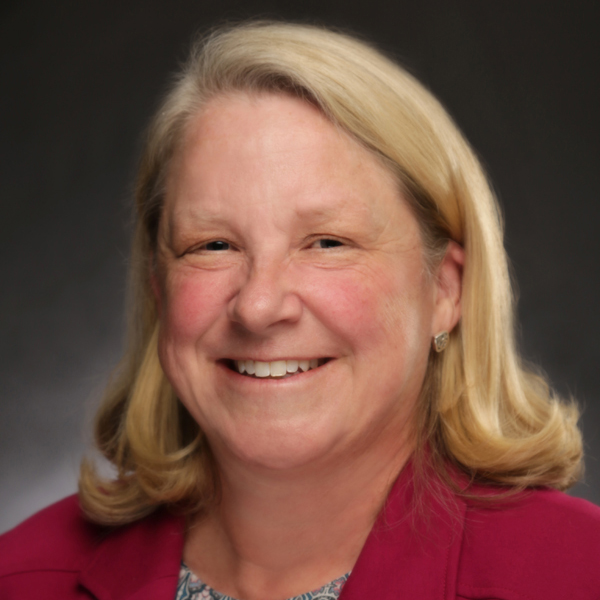
Celia Jaffe
California State PTA
What among the governor’s proposals will most advance students’ recovery from the pandemic and why?
Universal transitional kindergarten could be a game-changer. We know that investments in early childhood education pay off tremendously over time and are effective in addressing the effects of poverty. But there are caveats. Instruction of 4-year-olds needs to be developmentally appropriate, taught by properly trained professionals. Such a large program, which will need to be supported in perpetuity, will require extensive planning and sustained funding. PTA is looking forward to more details on this one.
Celia Jaffe is the president of California State PTA, a child advocacy organization with hundreds of thousands of members throughout the state.
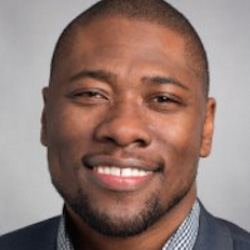
Ryan Smith
Partnership for Los Angeles Schools
What among the governor’s proposals will most advance students’ recovery from the pandemic and why?
I’m elated to see Gov. Newsom has proposed a strong start for early education with a substantial investment in transitional kindergarten. The pandemic has exposed and exacerbated many inequities, and our youngest scholars are at a vulnerable stage in their educational life. Ensuring California’s youngest children have high-quality early learning opportunities is imperative for the success of students. I am also excited about his proposal to expand child care, which would provide working parents with some much-needed support and flexibility as they navigate workplace changes during pandemic recovery.
Ryan Smith is the interim CEO of the Partnership for Los Angeles Schools – an in-district, non-profit partner that serves 14,200 students across 19 LA Unified public schools in Watts, Boyle Heights and South Los Angeles.

Corey Matthews
Community Coalition for Substance Abuse Prevention & Treatment
What among the governor’s proposals will most advance students’ recovery from the pandemic and why?
The intentional and targeted focus on the whole child starting with investments in early education leaves much room for hope and optimism in the future of learning for California’s youth. The specific emphasis on transforming youth behavioral systems and converting schools into community schools while investing in universal pre-kindergarten and college feels like the most comprehensive reform to education since the passing of Prop. 13, which worked in the reverse.
What priority should have been in the budget but wasn’t?
The training and rapid certification programs needed to equip a workforce with the skills and know-how to fulfill the promise of our comeback plan.
Corey Matthews is COO at Community Coalition, a permanent community-based organization in South Los Angeles.
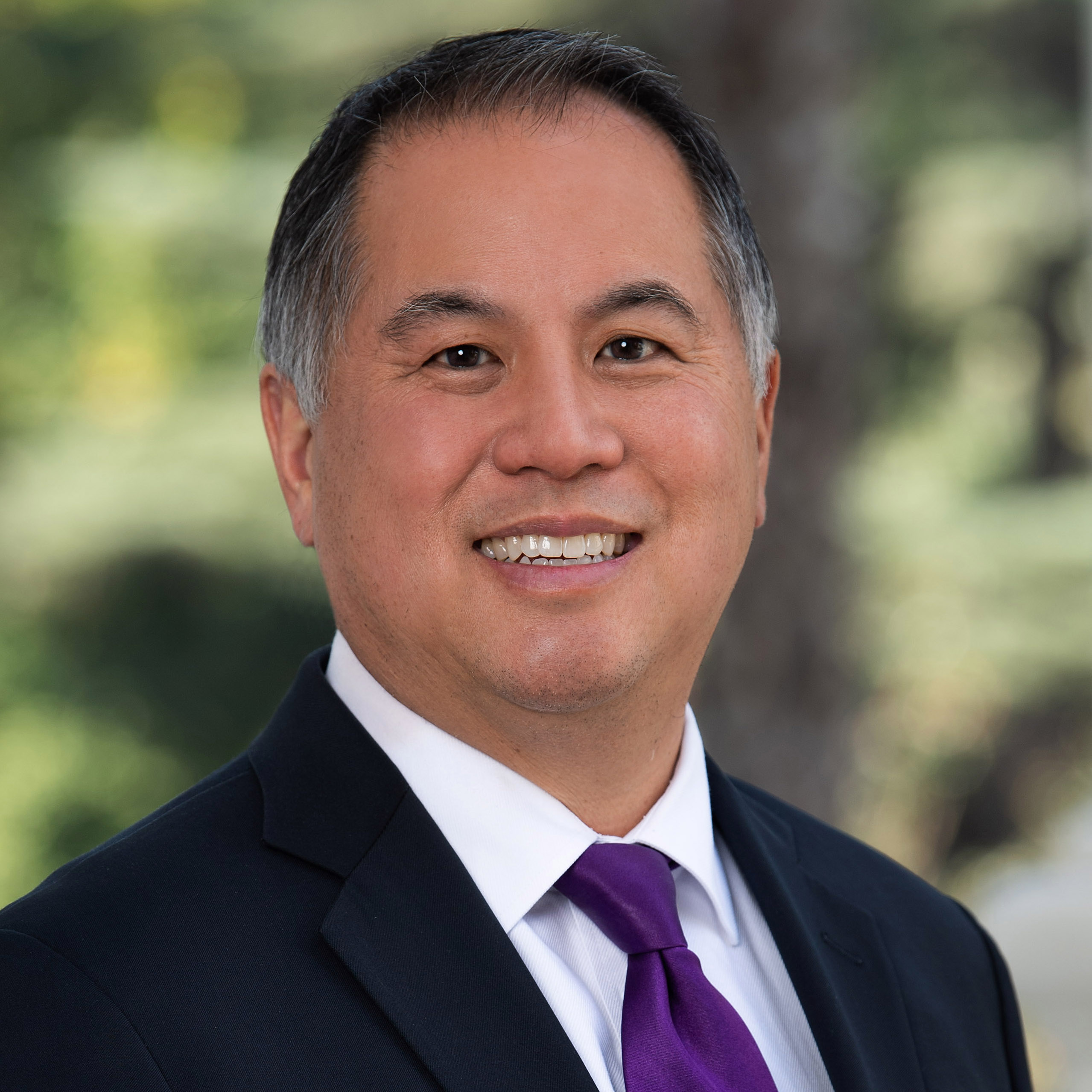
Assemblymember Phil Ting, D-San Francisco
Chair of the Assembly Budget Committee
What among the governor’s proposals will most advance students’ recovery from the pandemic and why?
The governor’s proposal adds 100,000 in new child care slots. In fact, many families aren’t able to go back to work unless they have access to child care.
What priority should have been in the budget but wasn’t?
The Assembly agrees with allowing more families to access these programs, but we believe 300,000 more slots would better meet their needs. Child care rates should also be a priority in the budget. We need to pay child care workers a wage that respects both their profession and the importance of their child development role.
Assemblymember Phil Ting represents Assembly District 19, which includes the west side of San Francisco and Northern San Mateo County.

Lance Christensen
California Policy Center
What among the governor’s proposals will most advance students’ recovery from the pandemic and why?
None of Gov. Newsom’s proposals will advance early education students’ recovery from the pandemic. Granted, child care is a significant issue for single parent or dual income households, but phasing in a universal transitional kindergarten program doesn’t address the immediate problem and can only mean billions of dollars in upfront staffing costs with no clear plan on where to house these children. In the meantime, salaries, benefits and pensions will continue to put a strain on an unhealthy and underfunded retirement system.
What priority should have been in the budget but wasn’t?
The priority in early childhood education should not be in expanding expensive long-term programs with one-time funds.
Lance Christensen is the chief operations officer at the California Policy Center, an educational nonprofit working to remove public-sector barriers to freedom.

Jeff Camp
Ed100.org
What among the governor’s proposals will most advance students’ recovery from the pandemic and why?
Universal, high-quality early education is the longest, strongest lever to lift today’s children to tomorrow’s opportunities. At last, this budget appears to move from rhetorical support for transitional kindergarten to a plan for a plan with a timeline attached.
What priority should have been in the budget but wasn’t?
Expanding early education requires schools to find more space. Many school facilities in California are old and/or crowded. The next try for a state bond measure for school facilities should include spaces for early education.
Jeff Camp is founder and editor of Ed100.org, a free resource that explains California education issues plainly, in English and Spanish, so that parent leaders and student leaders can get informed, get involved and be heard.

Lawrence Picus
USC Rossier School of Education
What among the governor’s proposals will most advance students’ recovery from the pandemic and why?
The availability of transitional kindergarten education for all 4-year-olds is an exciting and important initiative that will help students catch up with any learning and socialization deficits caused by the pandemic, and will also provide long term benefits for student learning and educational outcomes in the long run provided the state continues to fund TK education for all 4-year-olds.
Lawrence Picus is a professor and associate dean at the USC Rossier School of Education.
To get more reports like this one, click here to sign up for EdSource’s no-cost daily email on latest developments in education.














Comments (6)
Comments Policy
We welcome your comments. All comments are moderated for civility, relevance and other considerations. Click here for EdSource's Comments Policy.
Frank Sterle Jr. 3 years ago3 years ago
Sadly, due to the common OIIIMOBY mindset (Only If It’s In My Own Back Yard), the prevailing collective attitude, however implicit or subconscious, basically follows: ‘Why should I care — I’m soundly raising my kid?’ or ‘What’s in it for me, the taxpayer, if I support child development programs for the sake of others’ bad parenting?’ The wellbeing of all children — and not just what other parents’ children might/will cost us as future criminals … Read More
Sadly, due to the common OIIIMOBY mindset (Only If It’s In My Own Back Yard), the prevailing collective attitude, however implicit or subconscious, basically follows: ‘Why should I care — I’m soundly raising my kid?’ or ‘What’s in it for me, the taxpayer, if I support child development programs for the sake of others’ bad parenting?’
The wellbeing of all children — and not just what other parents’ children might/will cost us as future criminals or costly cases of government care, etcetera — needs to be of importance to us all, regardless of whether we’re doing a great job with our own developing children.
I would like to see child-development science curriculum implemented for secondary high school students, and it would also include neurodiversity, albeit not overly complicated. It would be considerably more detailed than what’s already covered by home economics, et cetera, curriculum: e.g. diaper changing, baby feeding and so forth. I don’t think the latter is anywhere near sufficient (at least not how I experienced it) when it comes to the proper development of a child’s mind.
For one thing, the curriculum could/would make available to students potentially valuable/useful knowledge about their own psyches and why they are the way they are. And besides their own nature, students can also learn about the natures of their peers, which might foster greater tolerance for atypical personalities. If nothing else, the curriculum could offer students an idea/clue as to whether they’re emotionally suited for the immense responsibility and strains of parenthood.
Frank Sterle Jr. 3 years ago3 years ago
I would like to see child-development science curriculum implemented for secondary high school students, and it would also include neurodiversity, albeit not overly complicated. It would be considerably more detailed than what's already covered by home economics, et cetera, curriculum: e.g. diaper changing, baby feeding and so forth. I don't think the latter is anywhere near sufficient (at least not how I experienced it) when it comes to the proper development of a child’s mind. For … Read More
I would like to see child-development science curriculum implemented for secondary high school students, and it would also include neurodiversity, albeit not overly complicated. It would be considerably more detailed than what’s already covered by home economics, et cetera, curriculum: e.g. diaper changing, baby feeding and so forth. I don’t think the latter is anywhere near sufficient (at least not how I experienced it) when it comes to the proper development of a child’s mind.
For one thing, the curriculum could/would make available to students potentially valuable/useful knowledge about their own psyches and why they are the way they are. And besides their own nature, students can also learn about the natures of their peers, which might foster greater tolerance for atypical personalities. If nothing else, the curriculum could offer students an idea/clue as to whether they’re emotionally suited for the immense responsibility and strains of parenthood.
I believe the wellbeing of all children — and not just what other parents’ children might/will cost us as future criminals or costly cases of government care, etcetera — should be of great importance to us all, regardless of whether we’re doing a great job with our own developing children. But I’m not holding my breath, as I’ve found that most people are pessimistic and/or hostile towards such concepts. (To many people, they sound too much like socialism or communism.)
I believe the wellbeing of all children — and not just what other parents’ children might/will cost us as future criminals or costly cases of government care, et cetera — should be of great importance to us all, regardless of whether we’re doing a great job with our own developing children.
Marie Ibsen 3 years ago3 years ago
To Dr. Lawrence Picus: Is USC going to offer a targeted doctorate related to the now emergency need of trained experts in Early Education? The field is lacking doctorate programs in Early Childhood Education, especially west of the Rocky Mountains. I know this because I have been looking for a program here on the West Coast for quite a while. It seems to me that highly trained educators with doctorates in Early Childhood Education should … Read More
To Dr. Lawrence Picus: Is USC going to offer a targeted doctorate related to the now emergency need of trained experts in Early Education? The field is lacking doctorate programs in Early Childhood Education, especially west of the Rocky Mountains. I know this because I have been looking for a program here on the West Coast for quite a while. It seems to me that highly trained educators with doctorates in Early Childhood Education should be an essential part of the infrastructure for this mammoth task in front of us. It will be a challenge to make sure that the learning environments, curriculum and the training of all the new teachers to take their ECE places are well planned and provide the necessary support and pathways for growth in the practice of teaching and that we provide constant advocacy for everything to be developmentally appropriate. There also needs to be consistent connection and communication to administrators where these Universal TK programs are to be housed so that they are included in the discussion and application of developmentally appropriate practices and curriculum.
We are in desperate need of a spider web of connection and communication, uplift and development, and problem solving and commitment to deliver this ambitious plan and make it a growing and glowing entity of learning for the little ones. This needs guidance and nurturing and the trainers and leaders need to begin their own training journeys now.
TK 4 All California 3 years ago3 years ago
While it is exciting news that the Governor recognizes the value and impact early childhood education has on our state’s youngest learners, it remains to be seen if his Universal TK proposal will truly be accessible to all who are eligible. Currently, a number of wealthy basic aid school districts throughout the state refuse to offer TK citing the statute from EC 48000 “as a condition of receipt of apportionment” as their excuse. If the … Read More
While it is exciting news that the Governor recognizes the value and impact early childhood education has on our state’s youngest learners, it remains to be seen if his Universal TK proposal will truly be accessible to all who are eligible.
Currently, a number of wealthy basic aid school districts throughout the state refuse to offer TK citing the statute from EC 48000 “as a condition of receipt of apportionment” as their excuse. If the Governor wants to expand TK, this loophole must be addressed. More basic aid districts will cut their TK programs and the ones who don’t offer it now will continue to remain on the sidelines. Sadly, the school boards of these basic aid districts voted to cut their TK programs years ago and have chosen to allocate their property tax funding to other expenditures such as higher salaries.
Transitional Kindergarten can have a lasting impact in a child’s life as many studies indicate. Let’s make sure the 4 year olds who live in basic aid districts are given the same opportunity. Not everyone who lives in a basic aid district can afford a private school alternative or is able to access a spot in a neighboring school district’s TK program- the two alternatives these no-TK basic aid districts offer to families.
Lisa Wilkin 3 years ago3 years ago
Where are the comments from the people who actually provide the care and education for our youngest learners? The providers, teachers and administrators who do the work? Many of us have a very different perspective from those people who advocate "for" us. There is tremendous distress in the field about the Governor's proposal to expand transitional kindergarten at lightening speed, particularly those of us who remember what happened during the Class Size … Read More
Where are the comments from the people who actually provide the care and education for our youngest learners? The providers, teachers and administrators who do the work? Many of us have a very different perspective from those people who advocate “for” us. There is tremendous distress in the field about the Governor’s proposal to expand transitional kindergarten at lightening speed, particularly those of us who remember what happened during the Class Size Reduction implementation.
Radha Bala 3 years ago3 years ago
I am an Early Childhood Special Education teacher for the last 13 plus years. I hope when the governor and all representatives discuss Early Childhood Education that they also include our special ed population. What are the governors plan for funding Early Childhood special education? How is the governor going to include our special ed population? What incentives will he provide for districts to open more classes and hire more support staff? How … Read More
I am an Early Childhood Special Education teacher for the last 13 plus years. I hope when the governor and all representatives discuss Early Childhood Education that they also include our special ed population. What are the governors plan for funding Early Childhood special education? How is the governor going to include our special ed population? What incentives will he provide for districts to open more classes and hire more support staff? How much money will to to training our support staff? Is he wiling to increase the wages for teachers and support personnel?